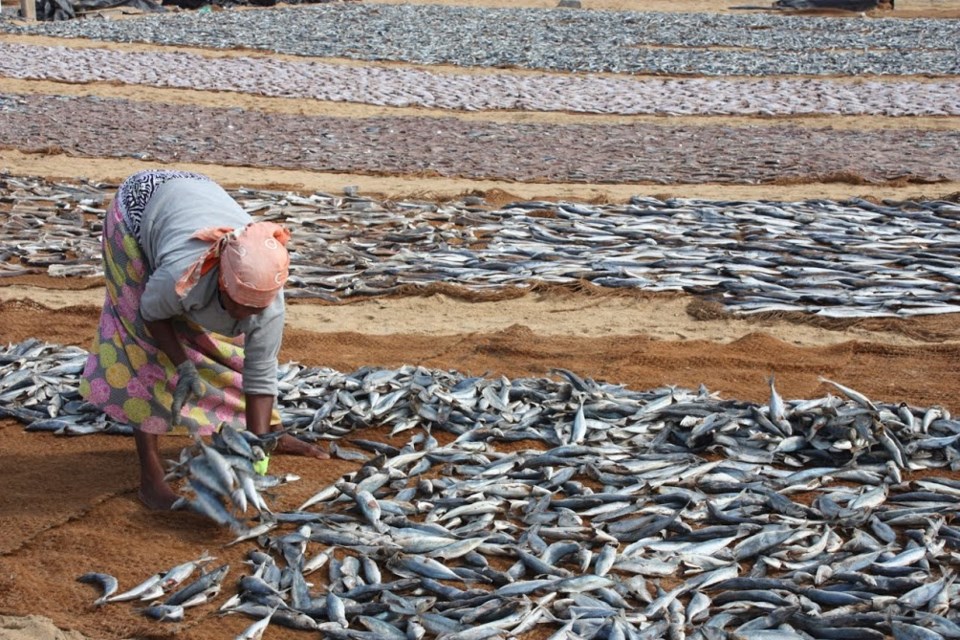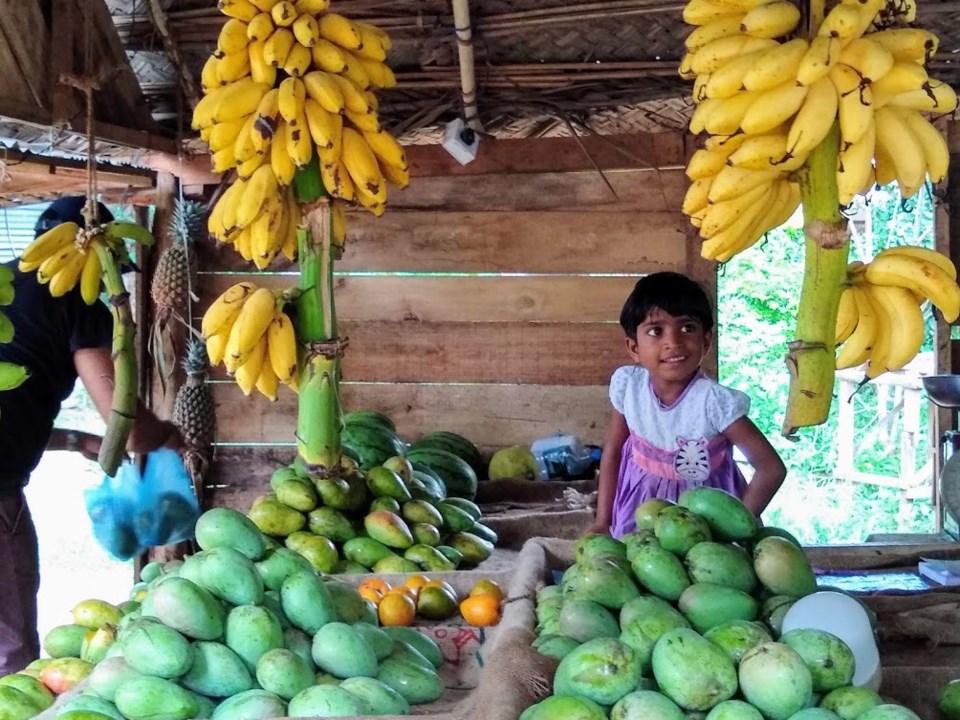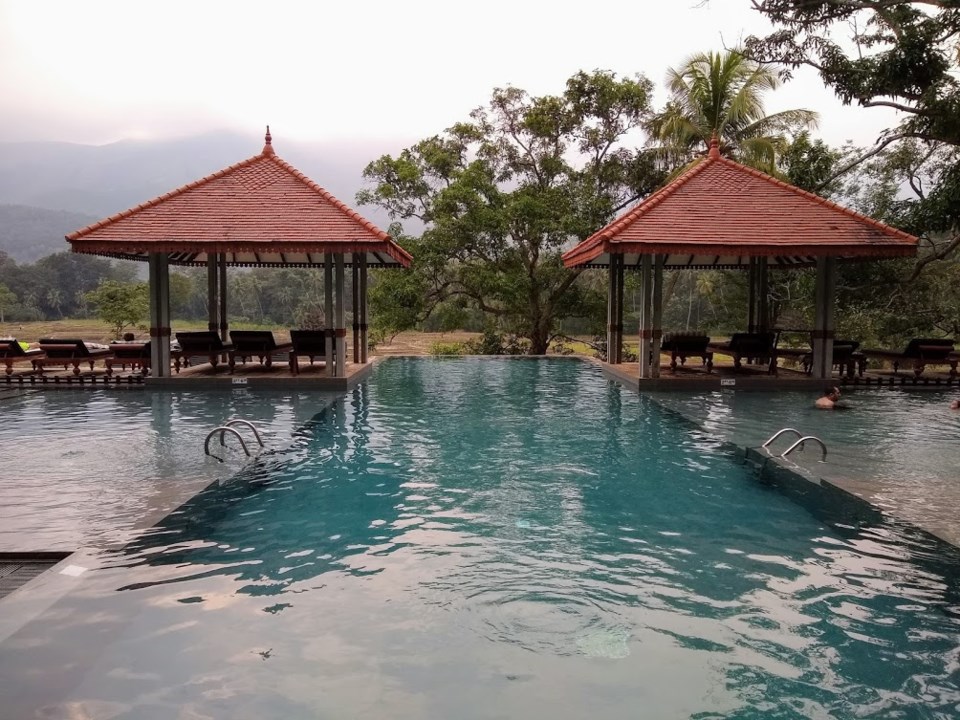As I walk under the mango tree at my hotel in Wellawaya, Sri Lanka, I hear a loud rustling. Looking up, I see a long tail.
“That’s the naughtiest monkey,” says a passing hotel employee, looking ruefully into the branches. He says the monkey takes the fruits before they’re ripe, eating just a bite or two before throwing the hard green lumps on the ground in disgust. “We never get to eat the mangoes.”
It’s been a week of monkeys and mangoes. At the dried fish market in Negombo, where acres of silvery fish are laid out to dry in the salt water and sun, a man sat with a monkey at his side and a basket in front of him. He lifted the lid from the basket. A cobra reared its head and the monkey rushed in with bared teeth. It was a startling scene and one I saw replicated day after day at different tourist sites — man, monkey, snake. I gaped for a moment before turning to walk away.

After a stop in a roadside garden for fresh mango juice — where a tiny frog tried to hitch a ride on my leg — I climbed the path to the Dambulla Cave Temple. Declared a UNESCO World Heritage Site in 1991, the complex of five caves is home to 157 statues of the Buddha and a seemingly infinite number of monkeys. It was early in the trip and no one in my group had realized yet just how many monkeys we would see during our time here. Every few moments, someone stopped to take a photo — and our climb up the hill went slowly.

“You guys really like monkeys?” our guide asked skeptically, as he tried to hurry us along. We picked up the pace once we realized all these monkey photos were cutting into elephant time.
Our next stop was Kaudulla National Park, where hundreds of elephants gather in the afternoons to drink and feed. Piling into jeeps and driving into the mud, we raced against oncoming rain, which started falling in sheets just as we reached the elephant herd.
Huddling under the hastily closed roof of our jeep, we watched the animals wrap their trunks around sections of grass, twisting it mightily out of the soil, then smacking it against the ground to knock off the dirt. In the distance, a baby elephant trumpeted water over his back. The rain stopped and we opened the roof in time to drive out of the park as the sun set, the elephants becoming silhouettes against the pink and purple sky.

In the morning, we climbed Sigiriya, the Lion Rock, a 200-metre-high rock fortress used as a citadel in the fifth century. Monkeys, of course, sat in the trees near the parking lot and we were only slightly less interested than we were the day before. Once we pulled ourselves away, we walked through the ancient boulder garden toward the monolith, then started to climb. At the halfway mark, we walked through the huge stone lion paw gate that gives the rock its name. At the top, with sweeping views in all directions, we paused among the foundations of an ancient palace to catch our breath and let our sweat dry before heading back down.

Our reward for all that exertion was fresh coconuts and sweet mangoes, eaten under a mango tree at a roadside fruit stand manned by an impossibly charming young girl and her parents. The father handed us the coconuts, each with a straw. Once the liquid was gone, he cut them open with a machete so we could scrape out the tender flesh.

Back at Wellawaya, I make my way past the naughtiest monkey to the pool overlooking 50 acres of rice paddy land. Farmers are working with their water buffalo to turn the soil, preparing to plant the annual crop. Peacocks parade around the grounds and a couple of hornbills land high in a nearby tree.

Overnight, I’m awoken by the sounds of the forest. It’s pouring rain again and the insects are screaming. It’s eerily quiet and stunningly loud at the same time. I turn over, close my eyes and go back to sleep, killing time until it’s a reasonable hour for more mangoes.
Christina Newberry travelled as a guest of the Sri Lanka Tourism Promotion Bureau, which did not review or approve this article.



